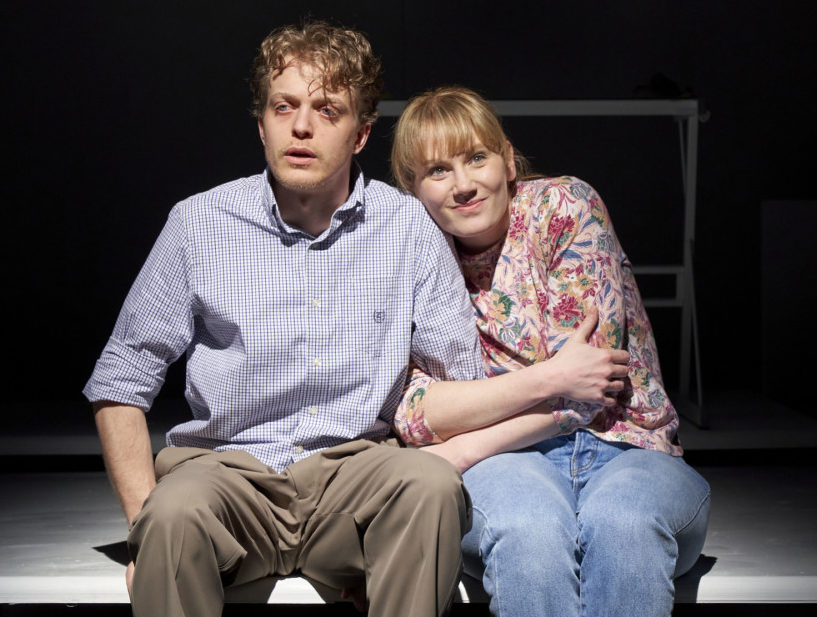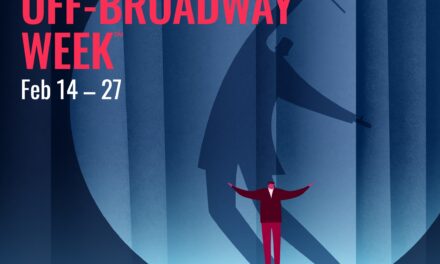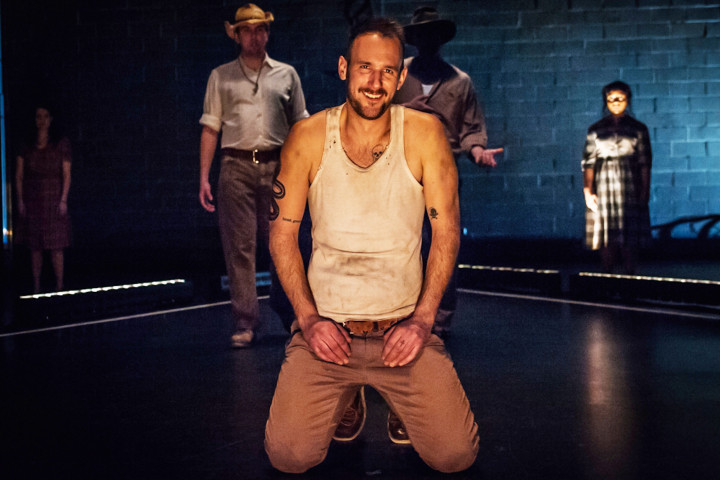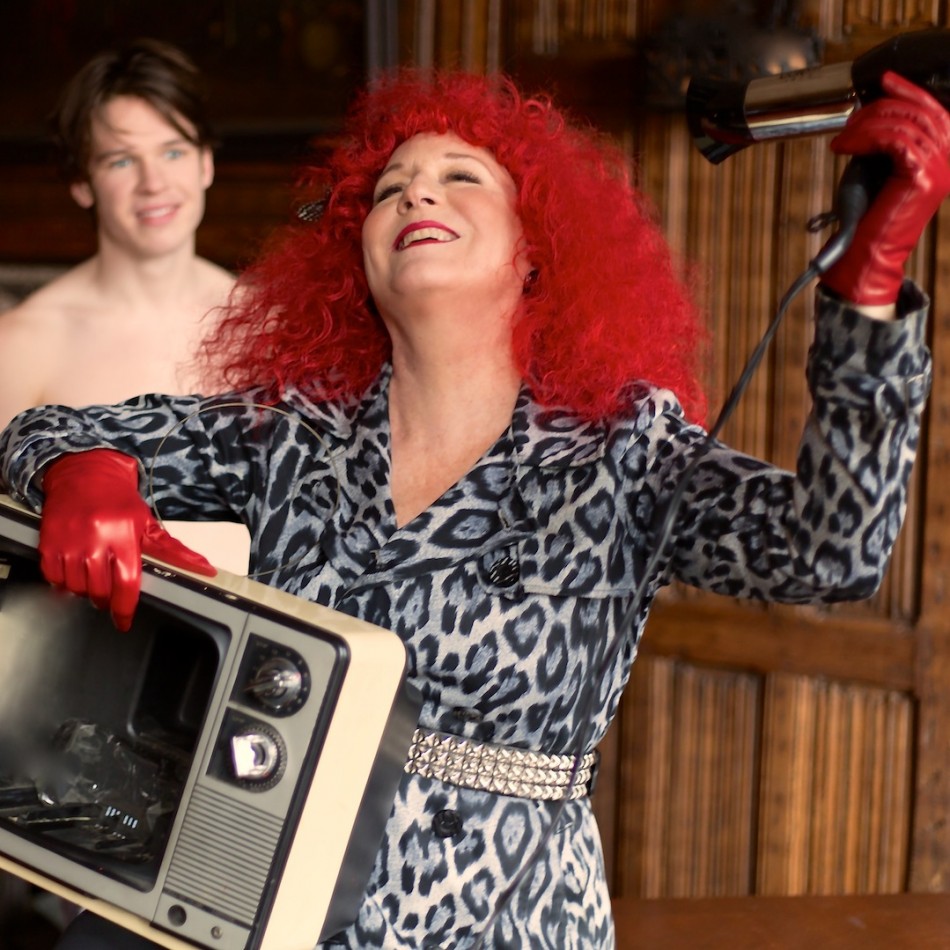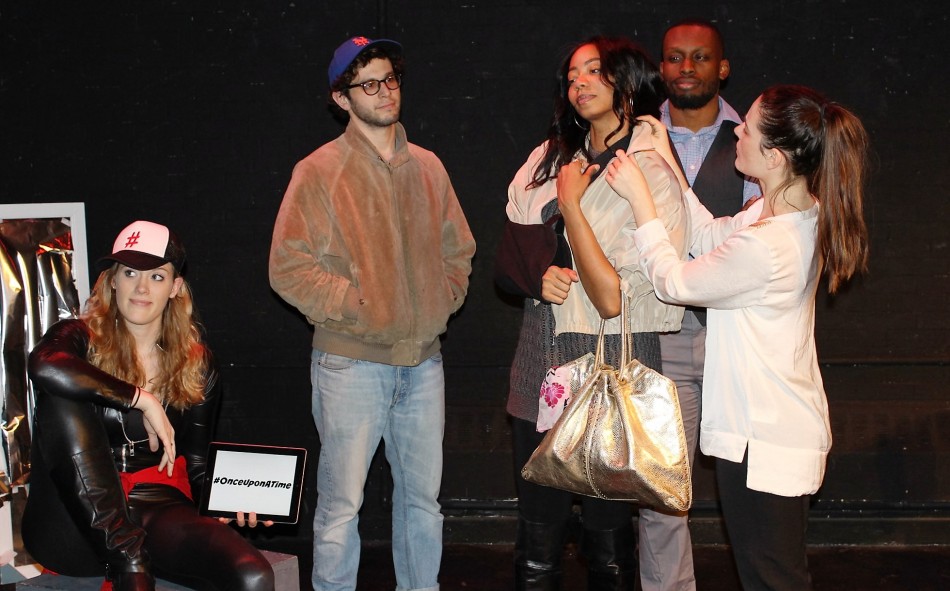
By JK Clarke
There are few among us who haven’t at one time or another pondered what life might be like living with a severely developmentally disabled family member. While those individuals may be loving and cherished people, they often present intense challenges for both parents and siblings. Sister Calling My Name, playing at the Sheen Center for Thought and Culture (and presented by Blackfriars Repertory Theatre and The Storm Theatre Company) through February 16, tackles such a circumstance from the point of view of an afflicted young woman’s brother, based loosely on playwright Buzz McLaughlin’s life.
At the open we meet Michael (John Marshall), the protagonist in this memory play, who’s describing his only sibling, his sister Lindsey (Gillian Todd), now an adult, whom we see and hear in the background, illuminated and beaming. She seems radiant and overjoyed as she sits and paints in water colors. “Lindsey paint beautiful picture for Michael!” Michael explains that Lindsey’s clinical diagnosis is “severe mental retardation and schizophrenia.” Aha. Already we know how difficult his childhood must have been.


Susie Duecker, Gillian Todd, John Marshall
Switching back to an omniscient, present day view, we see Lindsey in the Sisters of Mercy’s Home for Women in Fairmont, Minnesota where she is being watched over by Sister Frances Emmanuel, aka Sister Anne (Susie Duecker), a benevolent young nun who’s encouraging Lindsey to continue painting her painting and patiently answering Lindsey’s repeated questions about her brother. Sister Anne is also fielding calls about a gallery show of Lindsey’s paintings! Apparently Lindsey is a prodigy. So much so that Sister Anne is also arranging a trust for Lindsey, anticipating a financial windfall. To that end, she’s asking Michael, whose personal and professional life is in chaos, to come visit his sister and sign off on the trust, as her sole living guardian.
The early and most fascinating twist in the story (and what the nun, using her novitiate name, is initially hiding from Michael in order to get him to travel to Minnesota) is that Sister Anne and Michael were high school sweethearts; but she broke his heart when she left him for Jesus. And Michael has no idea that Sister Anne has been caring for his sister, whom he’d abandoned long ago, all these years. It’s a weird scenario, but rather intriguing.


Susie Duecker, John Marshall
Unfortunately, that early twist is about as exciting as the play gets. The dynamic between Michael and Sister Anne is fascinating, and should be investigated more deeply. But McLaughlin appears to have intended this piece as a meditation on his relationship with his sister and the associated guilt of his inability to help her and his ultimately leaving her behind. Unfortunately, that’s where he loses us. In his stage directions he insists that Lindsey’s “grief, fright, and anger must be played full tilt, as well as her radiant sense of joy.” Consequently the piece moves from being a play to almost a performance art piece. Under Peter Dobbins’ direction, those instructions are carried out, and the entire play is punctuated by Lindsey’s repetitive exclamations and inane utterances to such a degree that we feel—as we are likely meant to—the madness that poor Michael must have felt growing up with her. This is made all the more bizarre by Todd, who seems too bright-eyed and well put-together to be playing a person with Lindsey’s diagnosis. (There seems to be some hard-to-swalllow inference that Lindsey’s mental instability is successfully managed by her faith in God.) While it may be an effective device, it makes for unpleasant theater. Even Tennessee Williams managed to keep from driving the audience as insane as he must have felt in the company of either his mother or sister or both.
Using unwalled platforms of slightly different elevations and varied lighting to indicate different rooms or sets (Daniel Prosky did the set and Michael Abrams was responsible for the effective lighting), the production moves quickly as it jumps back and forth between the past and present and from room to room, bolstered by strong performances from Marshall and Duecker (and even Todd, who just isn’t believable in the role). But at 110 minutes (with intermission) it is far too repetitive for the very thin story delivered. It’s certainly a fascinating experience to explore, but perhaps not quite like this.
Sister Calling My Name. Through February 16 at the Sheen Center for Thought & Culture (18 Bleecker Street, between Bowery and Lafayette). www.sheencenter.org
Photos: Michael Abrams


